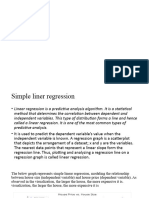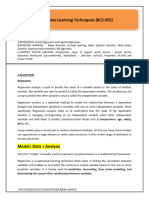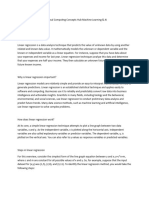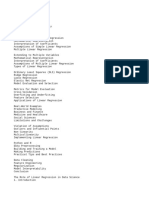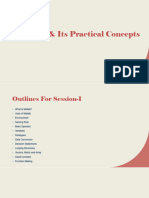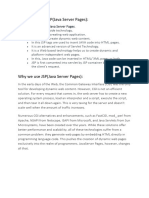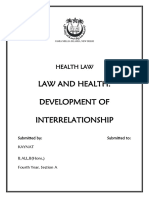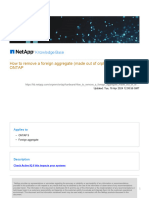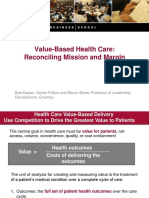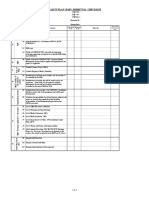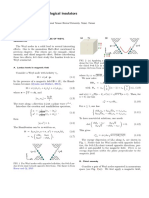0% found this document useful (0 votes)
22 views14 pagesLinear Regression Explained
The document discusses linear regression, which is a simple and widely used regression technique for predictive analysis and modeling relationships between variables. It explains what regression is, when it is needed, different types of regression models including linear, polynomial and logistic regression. It then focuses on linear regression, describing the concepts of positive and negative linear relationships, and providing Python code examples to perform simple and multiple linear regression.
Uploaded by
reduanullah nawshadCopyright
© © All Rights Reserved
We take content rights seriously. If you suspect this is your content, claim it here.
Available Formats
Download as PDF, TXT or read online on Scribd
0% found this document useful (0 votes)
22 views14 pagesLinear Regression Explained
The document discusses linear regression, which is a simple and widely used regression technique for predictive analysis and modeling relationships between variables. It explains what regression is, when it is needed, different types of regression models including linear, polynomial and logistic regression. It then focuses on linear regression, describing the concepts of positive and negative linear relationships, and providing Python code examples to perform simple and multiple linear regression.
Uploaded by
reduanullah nawshadCopyright
© © All Rights Reserved
We take content rights seriously. If you suspect this is your content, claim it here.
Available Formats
Download as PDF, TXT or read online on Scribd
/ 14
















